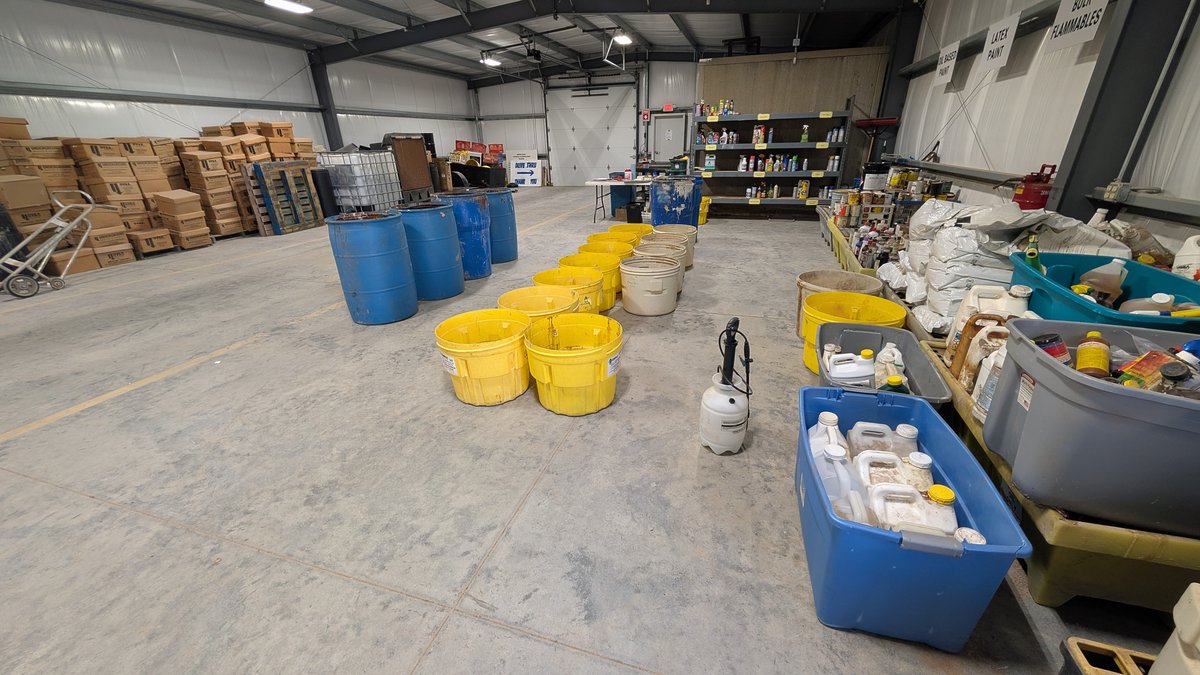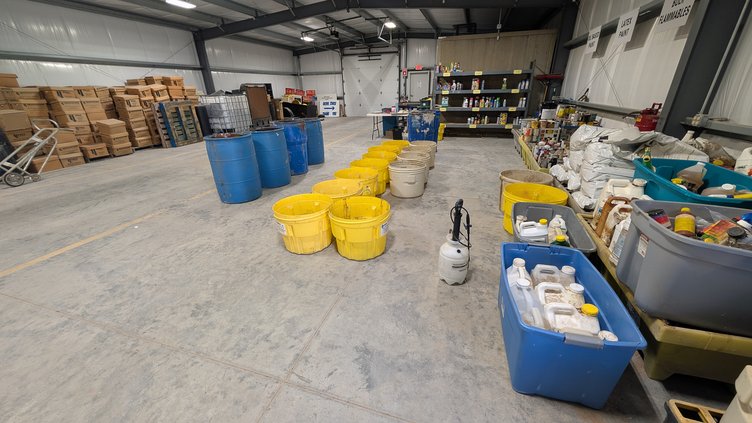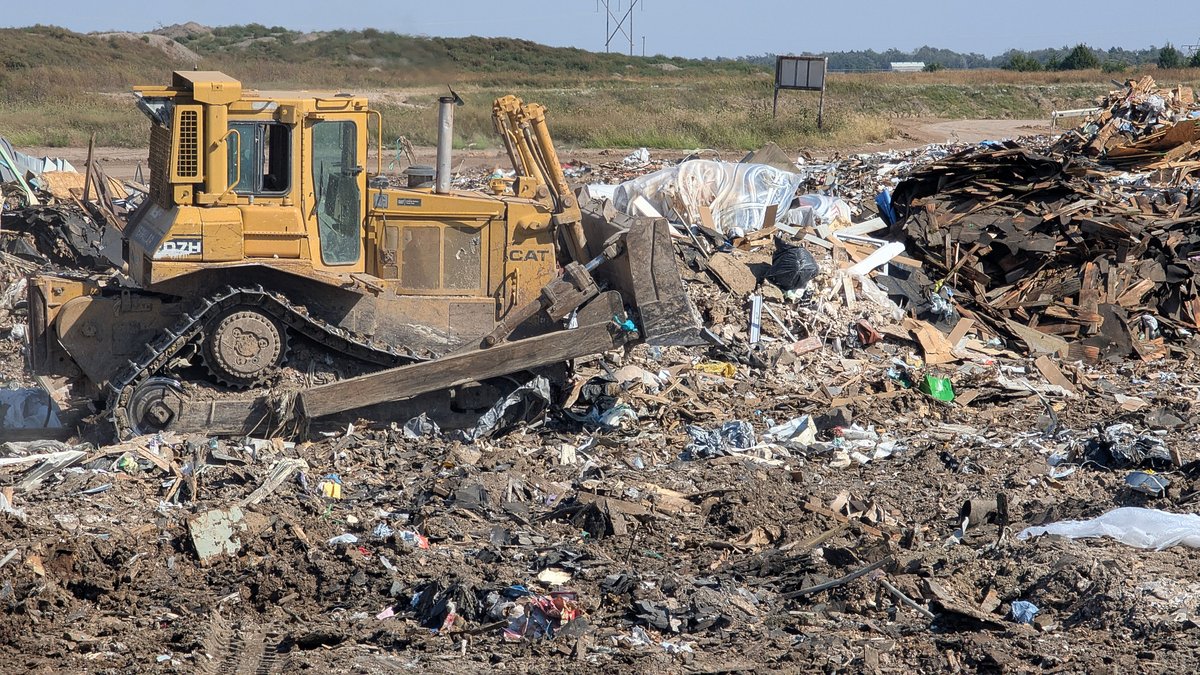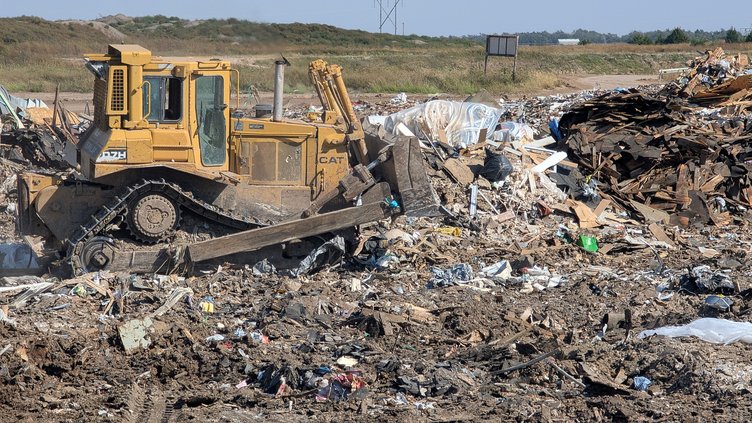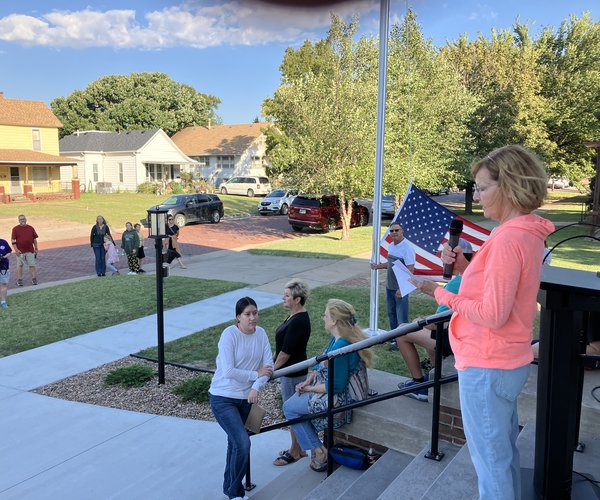Legend has it that a complete Studebaker rests buried somewhere in a massive mound of dirt in the original part of the Barton County Landfill.
While fascinating, this trivial tidbit pales in comparison to the real science and passion required to make this crucial facility operate, said Jennifer Hamby, solid waste director.
“Landfills are very important,” said Hamby, who has been with the Solid Waste Department for 15 years, three as director. “Without landfills, waste would accumulate in unregulated dump sites, ditches and city streets.”
A landfill is more than a final resting place for garbage; it’s a carefully engineered operation guided by environmental science and strict regulations from the Kansas Department of Health and Environment and Environmental Protection Agency, she said. The sprawling, 89.2-acre permitted waste footprint serves Barton as well as surrounding counties, demonstrating a vital commitment to public health and the environment.
“We are totally supported by tipping fees (charged to those dumping at the facility),” Hamby said. “We are not tax-supported at all.”
The landfill opened in 1973 as a private operation. Barton County took over in 1976, and it was certified as a Subtitle D facility in 2001, a state-of-the-art KDHE designation requiring a thick clay and plastic lining under all burial pits.
In addition to the open area, the landfill includes a closed portion that pre-dates certification, and a closed area that was dedicated to the debris from the 2001 Hoisington tornado.
More than merely a junkyard
“Due to strict regulations established by the EPA and KDHE, the landfill provides the community with a centralized, safe, and efficient method to dispose of its waste,” Hamby said. They accept municipal solid waste from Barton, Pawnee and Ellsworth counties, and portions of Rush County. It also handles special waste from locations across Kansas.
Each year, they have to reapply for five different permits from KDHE. This rigorous procedure covers the release of greenhouse gases into the air and the leaching of contaminants into the groundwater. There is constant testing and monitoring, and violations can lead to fines and possible landfill closure.
They accept municipal solid waste (household trash), construction and demolition waste, and offer free household hazardous and leftover or expired medications. And for a fee, they take tires and mattresses (the fee covers the landfill’s cost to haul and process these items).
“Residents can bring paints, cleaning products, batteries, and outdated or unused medications,” Hamby explained. The HHW collections are scheduled for the third Saturday of the month from April through October, but she said weekday appointments are available year-round for those who can’t make the weekend schedule.
In addition to safe disposal, the landfill operates a free reuse program offering usable items like paint and household cleaners to the public by appointment.
The landfill also champions e-waste recycling. Since 2009, the program has recycled approximately 700,000 pounds of electronics. The waste is transferred to the Rosewood Services’ E-cycle facility in Great Bend, which meticulously disassembles the devices to separate components like motherboards and scrap metal for further recycling.
The crucial role of recycling
A landfill’s maximum capacity is measured in air space, she said. They are limited to a finite volume based on the available space for waste and the height of the mounds of trash.
“We have 90 years of life left,” she said. “Barton County is in pretty good shape.”
It might surprise people to know that the landfill receives more food waste than anything else, a lot of which could be composted. Plastic and paper products round out the top three, both of which can be recycled.
“This is why recycling is so important,” she said. This keeps items out of the waste stream and out of the landfill, helping to extend its lifespan.
Throughout the day, operators run their massive machines over the piles of trash about four times. Their goal is to keep the material layers about two feet deep.
Ultimately, the facility is preparing for the future, she said. To maintain its operating permit, the landfill must have a Closure/Post-Closure Plan in place, which requires demonstrating the financial ability to carry out all necessary steps.
Daily operations
Running the landfill is a complex operation that requires dedicated staff and heavy machinery. The daily work is performed by a small team of seven, including one director, two scale clerks, and four equipment operators.
“The first and most important part of operating the landfill is the staff,” Hamby said. “Without a good staff, it wouldn’t be possible.”
Operators manage a fleet of equipment, including two Caterpillar compactors, a Bobcat skid loader, and various scrapers and dozers, all working in a harsh environment. This equipment is essential for the science of landfill operation—spreading and compacting waste in thin layers and covering it daily to minimize odors, litter and fires, but it is also costly to maintain.
Hamby notes that a major operational challenge is the weather. High winds can cause blowing litter, and the commission has established a wind resolution to close the facility when sustained winds exceed 30 miles per hour. Rain and snow also create difficulty by making the landfill challenging to navigate.
They do have wind screens and snow fences to help mitigate these issues..
“Moisture, such as rain and snow, can make the landfill challenging to navigate,” she said. “Our operators do their best to put down rock and back drag the tipping pad to make a solid dumping area for our customers when it’s muddy.”
A scientific endeavor
The science behind the operation is based on the controlled containment of decomposition. Waste undergoes two stages: aerobic decomposition (using oxygen) followed by anaerobic decomposition (without oxygen), which produces potent greenhouse gases like methane and carbon dioxide.
Controlling byproducts is a key challenge. Leachate, the liquid formed when water filters through waste, is managed by a liner system — the two-foot layer of impermeable clay and a durable synthetic geomembrane — to prevent groundwater contamination. Leachate is then pumped into evaporation ponds or recirculated. Landfill gas is currently vented in harmless amounts, though capturing it for energy is a future consideration as the facility grows.
